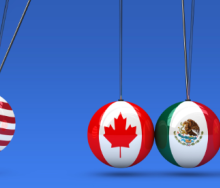Cost-cutting measures and higher freight rates have enabled the majority of top-15 carriers that publish financial reports to record a combined EBIT of US$2.7bn in Q2.
That’s according to the results of research just published by Sea-Intelligence.
“Looking at the financial performance, the shipping lines have been able to navigate these uncertain times rather well,” says CEO of the maritime consultancy Alan Murphy.
“This has to be the result of a combination of cost cutting and higher freight rates as nearly all carriers recorded a Y/Y decline in revenues, all carriers recorded a Y/Y decline in transported volumes (both globally and on Transpacific and Asia‑Europe), and nearly all carriers recorded a higher freight rate compared to 2019‑Q2.”
The figure below shows the EBIT/TEU of the 10 shipping lines that provide both their EBIT/operating results and global transported volumes. A positive EBIT/TEU means that the shipping line is making an operating profit for every TEU transported.

“In 2020-Q2 all 10 reporting shipping lines reported a positive EBIT/TEU. Even HMM, which has had profitability challenges in the past, recorded 129 USD/TEU. In fact, HMM’s EBIT/TEU was the same as that of Maersk.”
Hapag-Lloyd recorded the highest figure of 146 USD/TEU, with only four of these 10 carriers recording a lower than 100 USD/TEU reading. “This is the first time since 2010 that all reporting carriers have had a positive EBIT/TEU, although there were not enough reporting carriers in 2010.”
Murphy describes this as a very positive development for the shipping lines as the pandemic did not impact container shipping to the extent that was initially feared. “Industry focus will likely now be on Q3, which is the peak cargo season.”













